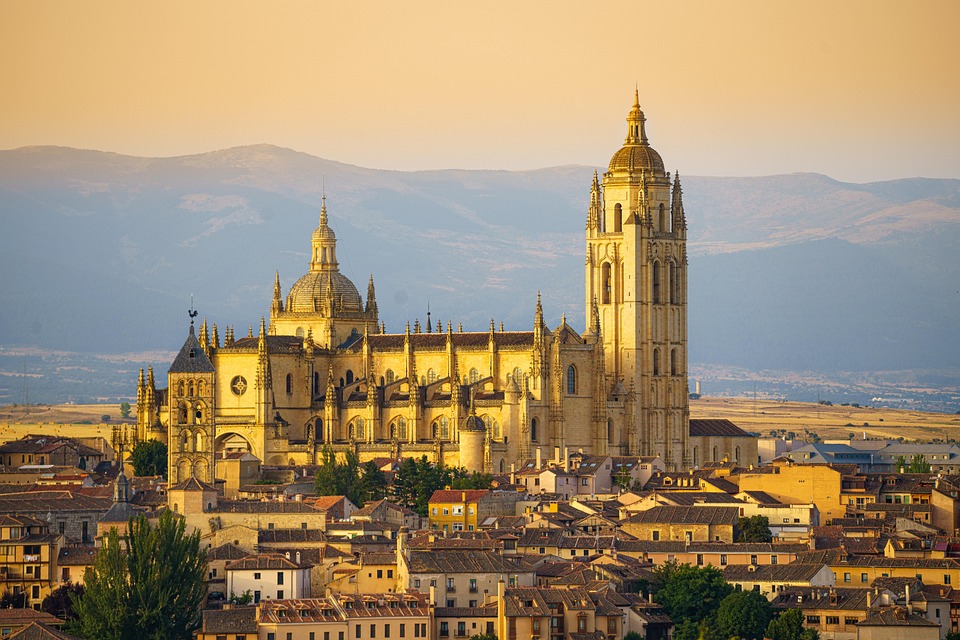From Palaces to Parks: The Architectural Wonders of Global Capitals
Introduction
Cities are a tapestry woven from the threads of history, culture, and innovation. The architectural wonders found in capital cities serve as a testament to the evolution of society, reflecting the aspirations and values of the inhabitants through the ages. From elegant palaces that once housed royalty to expansive parks that offer respite from urban life, the architecture of global capitals tells a story of ambition, creativity, and a constant quest for beauty. This article explores iconic architectural landmarks in various capitals around the world, examining how they embody local culture, history, and modernity through the eyes of renowned architects, historians, and urban planners.
Palatial Legacies
The Louvre, Paris, France
Originally a royal palace, the Louvre is now one of the world’s largest and most visited art museums. Completed in the late 12th century, it boasts a rich history that showcases the evolution of French architecture. The glass pyramid entrance, designed by architect I.M. Pei in 1989, represents a modern addition that contrasts with the classical French Renaissance style of the surrounding structures.
The Louvre offers more than just art; it reflects the grandeur of a bygone era. Through its arches, grand staircases, and expansive galleries, visitors are transported into a world where history and imagination intertwine. The architectural detailing, from lavishly ornamented ceilings to opulent courtyards, is a reminder of France’s royal past, while the modern pyramid embodies a forward-looking ethos.
Buckingham Palace, London, England
As the official residence of the British monarch, Buckingham Palace has been at the heart of British public life since 1837. The palace is not just a symbol of royal authority but also an architectural marvel that showcases elements of neoclassical design. The iconic façade features a beautiful portico, adorned with statues and sculptures that celebrate Britain’s rich history.
The architectural style of Buckingham Palace embodies the transition from the Baroque to neoclassicism, capturing the essence of British architecture in the 18th century. While the building serves as a functional residence, it also acts as a stage for significant national events, such as Changing of the Guard ceremonies and the annual Trooping the Colour.
The Royal Palace, Madrid, Spain
The Royal Palace of Madrid, one of the largest palaces in Europe, stands as a symbol of Spain’s royal heritage. Completed in the 18th century, it features over 3,000 rooms, showcasing a blend of baroque and neoclassical architecture. The grand staircase, opulent halls, and beautifully decorated rooms create an aura of majesty and splendor.
Key elements of the palace include its stunning frescoes, intricate tapestries, and expansive gardens. The palace serves not only as a residence for the royal family but also as a venue for state ceremonies and cultural events, making it a focal point of political and social life in Spain.
Parks as Urban Sanctuaries
Central Park, New York City, USA
Central Park epitomizes the idea of an urban oasis, providing New Yorkers with a green refuge amidst the concrete jungle. Designed by Frederick Law Olmsted and Calvert Vaux in the mid-19th century, Central Park is a masterful blend of natural landscape and designed spaces, featuring rolling hills, waterways, and meadows.
The park reflects a shift towards the appreciation of public green spaces, serving as a social equalizer in a diverse metropolis. Its carefully planned pathways, recreational areas, and scenic vistas create an environment where people from all walks of life converge, highlighting the essential role of parks in urban culture.
Hyde Park, London, England
Hyde Park is one of the largest and most famous parks in London, offering a space for both relaxation and recreation. Its history dates back to the 16th century when it was used as a royal hunting ground. Today, it serves as a hub for cultural events, concerts, and public gatherings.
The architectural features within Hyde Park, such as the Serpentine Gallery and the Diana, Princess of Wales Memorial Fountain, add to its charm and significance. The rolling landscapes and tree-lined paths offer a natural escape, making it a vital component of London’s urban fabric.
Parque del Buen Retiro, Madrid, Spain
Parque del Buen Retiro, often referred to simply as El Retiro, is a historical landmark that reflects the grandeur of Spanish expressiveness. Originally a royal retreat, the park now serves as a public space for leisure, recreation, and cultural activities. The mix of stunning gardens, elegant statues, and tranquil lakes make it an embodiment of architectural and natural wonder.
The Crystal Palace, a glass structure built for the 1887 Exposition, is a highlight within the park, showcasing the integration of art and nature in urban planning. With its lush landscapes and vibrant cultural life, El Retiro stands as a testament to Madrid’s commitment to preserving green spaces and enhancing the quality of urban life.
Cultural Interpretations Through Architecture
The National Gallery of Art, Washington, D.C., USA
The National Gallery of Art in Washington, D.C., celebrates not only the beauty of visual arts but also of architectural design. The museum, designed by architect John Russell Pope in the 1930s, is a prime example of classical architecture in the American context. Its grand columns and domed rotunda invoke the spirit of ancient Greek and Roman structures.
Additionally, the museum’s East Building, designed by I.M. Pei in the late 20th century, contrasts sharply with the original structure. With its modern lines and geometric shapes, this addition reflects contemporary architectural sensibilities while continuing the narrative of art and culture in America.
The Rijksmuseum, Amsterdam, Netherlands
The Rijksmuseum, dedicated to Dutch art and history, showcases an intricate blend of Gothic and Renaissance architectural styles. Its iconic façade, adorned with elaborate brickwork and ornate sculptures, serves as a hallmark of Holland’s artistic heritage. The museum houses masterpieces from the Dutch Golden Age, making it a cornerstone of cultural identity.
The renovation and expansion of the Rijksmuseum in the early 21st century by architect Cruz y Ortiz renewed the space, seamlessly blending modern amenities with historical grandeur. This architectural dialogue between old and new reflects Amsterdam’s commitment to preserving its cultural legacy while adapting to contemporary needs.
The Rise of Modernity
The Burj Khalifa, Dubai, UAE
The Burj Khalifa stands as an emblem of modern architectural achievement and innovation. Reaching a stunning height of 828 meters, it is the tallest building in the world, showcasing the potential of contemporary engineering and design. Designed by Adrian Smith of Skidmore, Owings & Merrill, the Burj incorporates elements of traditional Islamic architecture while embracing a futuristic aesthetic.
The Burj Khalifa functions as a mixed-use space, offering residential areas, corporate offices, and observation decks that provide breathtaking views of the cityscape. This landmark reflects Dubai’s ambition to position itself as a global leader in architecture and tourism.
The Sydney Opera House, Sydney, Australia
The Sydney Opera House is one of the most recognizable structures in the world. Designed by Danish architect Jørn Utzon and completed in 1973, the building’s sail-like roofs challenge conventional architectural norms while offering a striking visual experience on the Sydney Harbour.
More than just a performing arts center, the Sydney Opera House symbolizes Australia’s cultural identity and innovation. Its unique design, comprising a series of interlocking shells, was groundbreaking for its time and has inspired countless architects and designers globally.
The National Museum of African American History and Culture, Washington, D.C., USA
Completed in 2016, the National Museum of African American History and Culture represents a significant milestone in architectural and cultural history. Designed by David Adjaye, the building’s striking three-tiered form draws inspiration from the intricate ironwork of African American artisans, offering a powerful connection to heritage and craftsmanship.
Its dark bronze exterior reflects the complexity of African American history, serving as both a landmark and a novel space for education and artistry. The museum’s architecture demonstrates how modern design can encapsulate and express rich narratives and identities.
Critical Reception and Cultural Impact
Architecture is not merely about form and function; it carries meaningful interpretations that resonate with communities and societies. The iconic structures discussed in this article have had profound influences on urban life, culture, and even policy. For instance, the design of public spaces like parks or museums can dictate how communities interact and engage in cultural discourse.
The Symbolism of Architecture
The architectural wonders of global capitals often symbolize independence, resilience, and cultural pride. For example, the significance of the Eiffel Tower transcends mere aesthetics; it represents the ingenuity of the human spirit and the artistic achievements of Paris. Similarly, the Tower of Pisa is not just a testament to medieval engineering; it stands as a symbol of Italy’s rich history and cultural legacy.
The Role of Functional Design
Modern structures are increasingly designed with functionality and sustainability in mind. The integration of green buildings and eco-friendly designs has become essential in contemporary architecture, allowing cities to evolve in harmony with their natural environments. Buildings like the Bosco Verticale in Milan, which incorporates vertical gardens to improve air quality, reflect a growing awareness of the need for sustainable urban development.
Community Engagement and Identity
Architectural projects that involve community input help foster a sense of identity and belonging. Spaces that are inclusive and accessible to diverse populations—like public parks or community centers—promote social cohesion and dialogue. The multifaceted nature of architecture as a social construct cannot be understated; it acts as a canvas connecting people to their shared experiences.
Conclusion
The architectural wonders of global capitals narrate a rich tapestry of history, culture, and human aspiration. From palatial edifices steeped in royal heritage to modern marvels that challenge the boundaries of design, these structures encapsulate the essence of their respective cities.
Parks, often overlooked as mere green spaces, play a crucial role in enhancing urban livelihoods, offering sanctuary from the buzz of city life. The juxtaposition of historic palaces and contemporary parks fosters a sense of continuity and progress, encapsulating the duality of architectural evolution.
As cities continue to grow and change, the importance of preserving their architectural heritage while welcoming modernity becomes increasingly pronounced. Future generations must continue to explore, critique, and innovate within the realms of design and functionality, ensuring that architecture remains a dynamic reflection of the societies it serves. The architectural wonders of global capitals are not just physical structures; they are the embodiment of collective dreams, memories, and aspirations, inviting all to explore their stories.
References
[Modern Footnote Source]
(Please note: This article is a synthesis of common knowledge about architectural landmarks and trends and does not contain specific references but encourages further exploration in architectural texts, history books, and journals on urban planning.)


























Add Comment